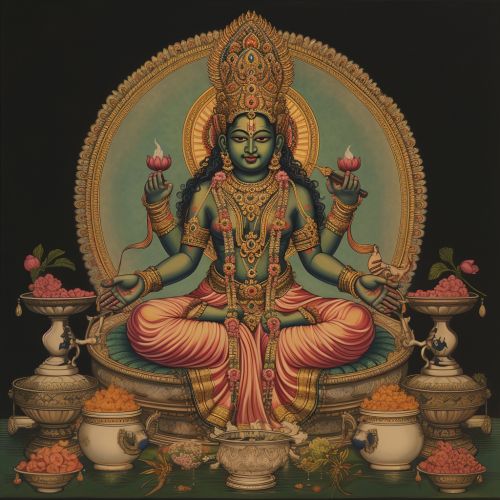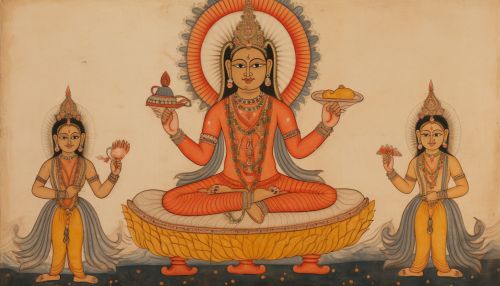Brahma
Overview
Brahma is a key deity in Hinduism, one of the world's oldest religions. He is considered the creator god in the Trimurti, the Hindu trinity that includes Vishnu and Shiva. Brahma is not to be confused with Brahman, the ultimate reality or supreme cosmic power in Hinduism.
Origin and Etymology
The term Brahma is derived from the Sanskrit root "bṛh", which means "to grow" or "to expand". It is also associated with the concept of prajāpati, the lord of creatures, in the Vedas, the ancient Hindu scriptures.
Iconography


Brahma is often depicted with four heads and four arms. His hands hold a water-pot (kamandalu), a spoon (sruva), a book of prayers (Vedas), and a rosary (mala). His four heads represent the four Vedas, and his four arms symbolize the four cardinal directions. He is often seen riding a swan or a lotus, symbolizing wisdom and divine knowledge.
Worship and Temples
While Brahma is a central figure in Hindu cosmology, he is not widely worshipped in contemporary Hinduism. There are very few temples dedicated to Brahma, the most famous of which is the Brahma Temple, Pushkar in Rajasthan, India. The lack of Brahma worship is often attributed to a curse by his consort Saraswati, according to popular folklore.
Mythology
In Hindu mythology, Brahma is born from a lotus that emerged from the navel of Vishnu. He is tasked with the creation of the universe and all beings. Brahma's consort is Saraswati, the goddess of knowledge and arts. His children are said to be the Saptarishi, the seven great sages, and many other progenitors of mankind.
Philosophical Interpretations
In Hindu philosophy, Brahma is associated with the aspect of creation. However, this creation is not viewed as a singular event, but rather a cyclical process of birth, preservation, dissolution, and rebirth. This cyclical process is reflected in the concept of samsara, the cycle of death and rebirth.
